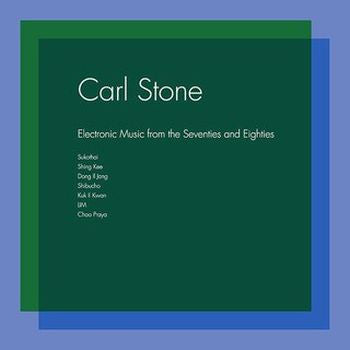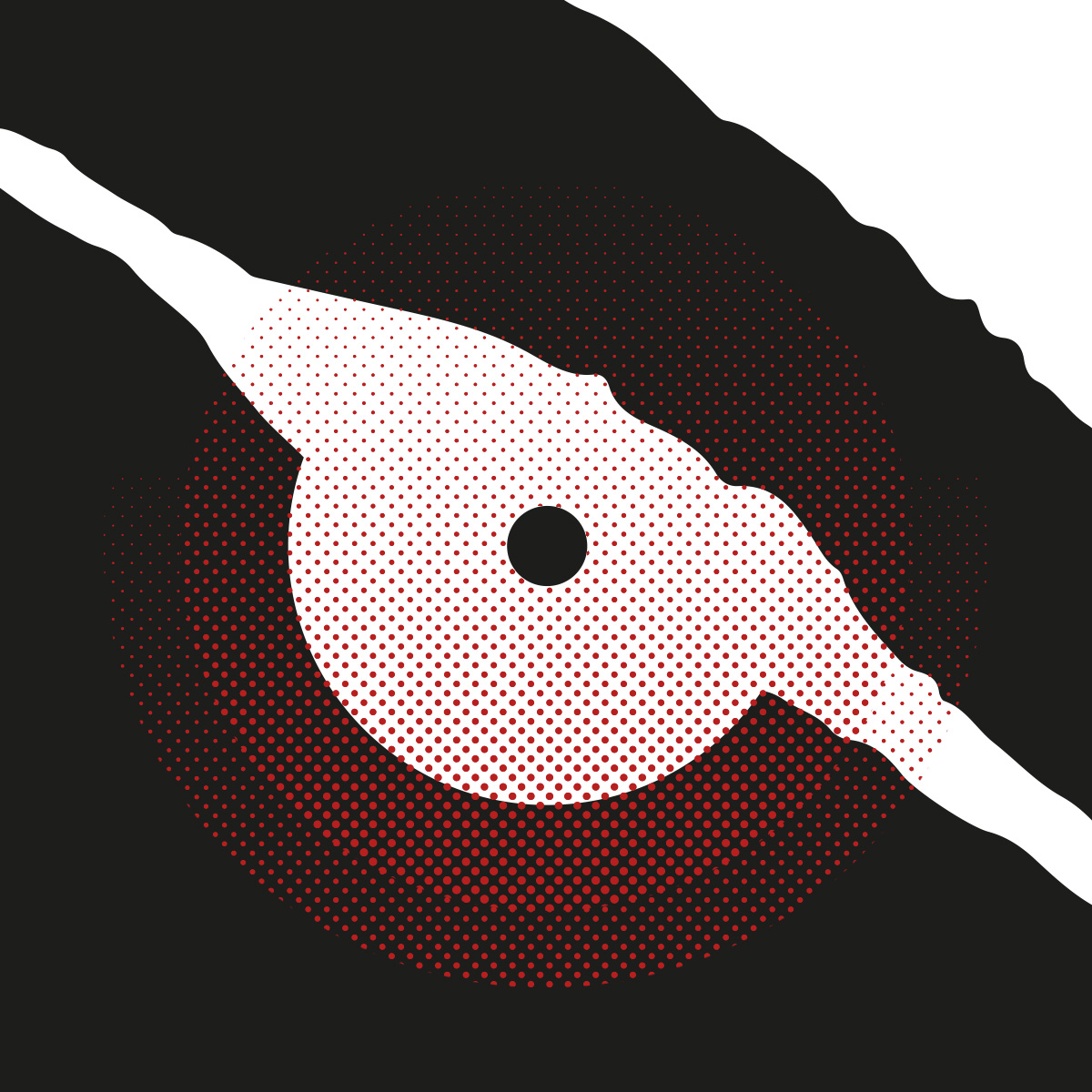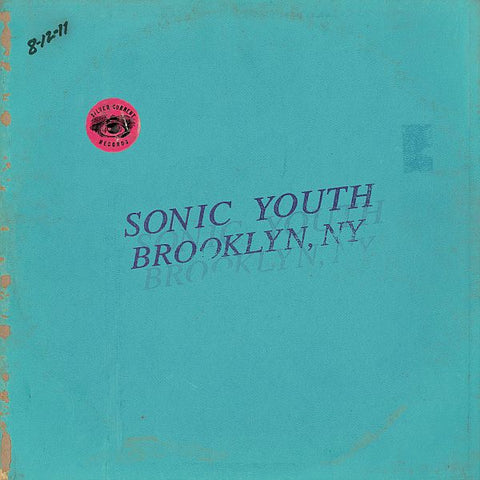
Unseen Worlds
CARL STONE - Electronic Music from the Seventies and Eighties 3LP
$69.95
To get an idea of the cryptic compositions made by California-born, now Japan-based composer Carl Stone, consider the three folks who give appreciations on this hefty compilation, Electronic Music From the Seventies and Eighties. One comes from respected world music critic Richard Gehr; another from the author of the 33 1/3 book on Aphex Twin’s Selected Ambient Works Vol. II; a third from the guy who conveys ethnic dish profundity throughout Greater Los Angeles, the Pulitzer Prize-winning food critic Jonathan Gold. Stone has had an equally un-slottable career since studying electronic music composition at CalArts with the likes of Morton Subotnick and James Tenney in the 1970s and performing with Japanese noisy improvisers like Otomo Yoshihide. Gold, for one, recalled seeing Stone perform around L.A. at upper-crust concert halls, nightclubs, punk venues, and art galleries.
By-turns lovely, prickly, meditative, and maddening, these eight extended compositions (some two and a half hours of music) showcase drastically different sides of Stone’s work, which previously was relegated to small batch cassette releases in the ’80s and early ’90s. An early adopter of the computer, which he used to create his pieces, Stone’s also worked with turntables and manically manipulated samples. He has electronically elongated source sounds until they take on entirely new topographies. These techniques anticipated later trends of all sorts, from the dense slivers of samples informing the Bomb Squad’s productions to Plunderphonic’s trash-compacting of pop music to Justin Bieber 800% Slower.
The earliest pieces here, “Lim” and “Chao Praya” date to the early ’70s when Stone was still a student at CalArts, utilizing a Buchla 200 series synthesizer to seek out the purest, most transportive of tones. These two pieces are stunning indeed, full of purring drones that at first appear to hardly be moving, only to have them slowly slide and reveal infinite amounts of overtones. It’s evocative of some of my favorite minimal music from this era, be it Charlemagne Palestine’s Four Manifestations on Six Elements or Folke Rabe’s Was??.
The stately “Sukothai” and ethereal “Shing Kee” come from 1977 and 1986, respectively, and both find Stone mincing a single musical ingredient into myriad dishes (the Gold connection becomes apparent in that Stone titled many of his pieces after his favorite L.A. restaurants). On “Sukothai,” he takes a sliver of harpsichord from Benjamin Britten’s already playful “Young Person’s Guide to the Orchestra” and—in a process similar to Steve Reich’s Come Out—teases it into two loops and then four. Stone exponentially increases them across a dizzying 14 minutes, until that dainty harpsichord line turns into a canon of a hefty 1024 loops. A similar process informs “Shing Kee,” as a five-second snippet of Schubert’s “The Linden Tree” gets distended in two directions. Small slivers of Akiko Yano’s voice are stretched into abstract yowls, but ever so slowly it tightens until the syllables become audible and the fully-sung line becomes clear. Then the piece retreats, with Stone stretching everything back from word to clouds, these small filaments spun into a blanket of abstract sound once again.
By the ’80s, Stone’s methods and focus began to shift. “Dong Il Jang,” from 1982, starts off as if it will be a droning soundscape, only to have it strobe and fragment. A sample of “testing one, two, three” and snatches of Asian folk music get worried into a maddening hiccup. If only the resultant 21 minutes sounded like something other than simply holding the fast-forward button on a CD player.
The massive “Kuk Il Kwan” strikes a balance between the two poles of Stone’s sound, moving from droning to churning, while “Shibucho” is another long piece of a finely diced sample. This time, Stone renders one of the dreamiest Temptations’ songs into an irritant like a severely scratched disc stuck in a six-disc changer. In the years since, this sound has been taken up by the likes of Japanese artist Yasunao Tone’s Solo for Wounde**d CD and Oval. But there’s something about the immense serving portions of Stone’s glitching pieces that—unlike some of the stunning other work to be found here—ultimately makes them hard to swallow.
By-turns lovely, prickly, meditative, and maddening, these eight extended compositions (some two and a half hours of music) showcase drastically different sides of Stone’s work, which previously was relegated to small batch cassette releases in the ’80s and early ’90s. An early adopter of the computer, which he used to create his pieces, Stone’s also worked with turntables and manically manipulated samples. He has electronically elongated source sounds until they take on entirely new topographies. These techniques anticipated later trends of all sorts, from the dense slivers of samples informing the Bomb Squad’s productions to Plunderphonic’s trash-compacting of pop music to Justin Bieber 800% Slower.
The earliest pieces here, “Lim” and “Chao Praya” date to the early ’70s when Stone was still a student at CalArts, utilizing a Buchla 200 series synthesizer to seek out the purest, most transportive of tones. These two pieces are stunning indeed, full of purring drones that at first appear to hardly be moving, only to have them slowly slide and reveal infinite amounts of overtones. It’s evocative of some of my favorite minimal music from this era, be it Charlemagne Palestine’s Four Manifestations on Six Elements or Folke Rabe’s Was??.
The stately “Sukothai” and ethereal “Shing Kee” come from 1977 and 1986, respectively, and both find Stone mincing a single musical ingredient into myriad dishes (the Gold connection becomes apparent in that Stone titled many of his pieces after his favorite L.A. restaurants). On “Sukothai,” he takes a sliver of harpsichord from Benjamin Britten’s already playful “Young Person’s Guide to the Orchestra” and—in a process similar to Steve Reich’s Come Out—teases it into two loops and then four. Stone exponentially increases them across a dizzying 14 minutes, until that dainty harpsichord line turns into a canon of a hefty 1024 loops. A similar process informs “Shing Kee,” as a five-second snippet of Schubert’s “The Linden Tree” gets distended in two directions. Small slivers of Akiko Yano’s voice are stretched into abstract yowls, but ever so slowly it tightens until the syllables become audible and the fully-sung line becomes clear. Then the piece retreats, with Stone stretching everything back from word to clouds, these small filaments spun into a blanket of abstract sound once again.
By the ’80s, Stone’s methods and focus began to shift. “Dong Il Jang,” from 1982, starts off as if it will be a droning soundscape, only to have it strobe and fragment. A sample of “testing one, two, three” and snatches of Asian folk music get worried into a maddening hiccup. If only the resultant 21 minutes sounded like something other than simply holding the fast-forward button on a CD player.
The massive “Kuk Il Kwan” strikes a balance between the two poles of Stone’s sound, moving from droning to churning, while “Shibucho” is another long piece of a finely diced sample. This time, Stone renders one of the dreamiest Temptations’ songs into an irritant like a severely scratched disc stuck in a six-disc changer. In the years since, this sound has been taken up by the likes of Japanese artist Yasunao Tone’s Solo for Wounde**d CD and Oval. But there’s something about the immense serving portions of Stone’s glitching pieces that—unlike some of the stunning other work to be found here—ultimately makes them hard to swallow.




